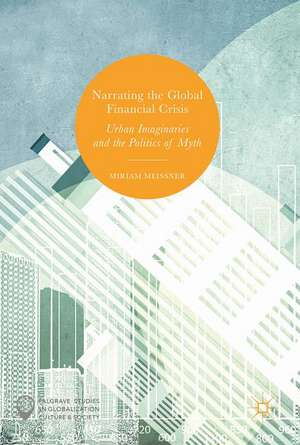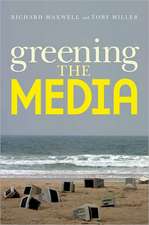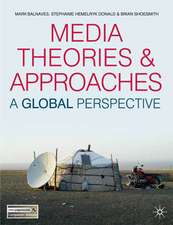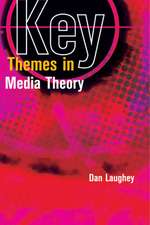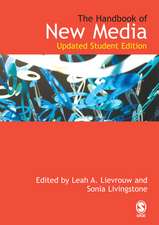Narrating the Global Financial Crisis: Urban Imaginaries and the Politics of Myth: Palgrave Studies in Globalization, Culture and Society
Autor Miriam Meissneren Limba Engleză Hardback – 6 iun 2017
This book analyzes how the Global Financial Crisis is portrayed in contemporary popular culture, using examples from film, literature and photography. In particular, the book explores why particular urban spaces, infrastructures and aesthetics – such as skyline shots in the opening credits of financial crisis films – recur in contemporary crisis narratives. Why are cities and finance connected in the cultural imaginary? Which ideologies do urban crisis imaginaries communicate? How do these imaginaries relate to the notion of crisis? To consider these questions, the book reads crisis narratives through the lens of myth. It combines perspectives from cultural, media and communication studies, anthropology, philosophy, geography and political economy to argue that the concept of myth can offer new and nuanced insights into the structure and politics of popular financial crisis imaginaries. In so doing, the book also asks if, how and under what conditions urban crisis imaginaries open up or foreclose systematic and political understandings of the Global Financial Crisis as a symptom of the broader process of financialization.
| Toate formatele și edițiile | Preț | Express |
|---|---|---|
| Paperback (1) | 777.83 lei 43-57 zile | |
| Springer International Publishing – 28 iul 2018 | 777.83 lei 43-57 zile | |
| Hardback (1) | 786.84 lei 43-57 zile | |
| Springer International Publishing – 6 iun 2017 | 786.84 lei 43-57 zile |
Preț: 786.84 lei
Preț vechi: 959.56 lei
-18% Nou
Puncte Express: 1180
Preț estimativ în valută:
150.58€ • 156.31$ • 125.56£
150.58€ • 156.31$ • 125.56£
Carte tipărită la comandă
Livrare economică 24 martie-07 aprilie
Preluare comenzi: 021 569.72.76
Specificații
ISBN-13: 9783319454108
ISBN-10: 3319454102
Pagini: 246
Ilustrații: XII, 252 p. 29 illus. in color.
Dimensiuni: 148 x 210 x 22 mm
Greutate: 0.58 kg
Ediția:1st ed. 2017
Editura: Springer International Publishing
Colecția Palgrave Macmillan
Seria Palgrave Studies in Globalization, Culture and Society
Locul publicării:Cham, Switzerland
ISBN-10: 3319454102
Pagini: 246
Ilustrații: XII, 252 p. 29 illus. in color.
Dimensiuni: 148 x 210 x 22 mm
Greutate: 0.58 kg
Ediția:1st ed. 2017
Editura: Springer International Publishing
Colecția Palgrave Macmillan
Seria Palgrave Studies in Globalization, Culture and Society
Locul publicării:Cham, Switzerland
Cuprins
1. Introduction: Myths of Finance and the City.- 2. Mythical Crisis Perspectives.- 3. Setting the Scene: Financial Spaces and Architectures.- 4. Figuring Flows: Urban Transport Myths of Trading.- 5. Dwelling in Times of Financialization: Dreams, Ruins, Escapism.- 6. Specters of Finance and the Black Box City.- 7. Conclusion: Financialization, Spectral Absence and the Politics of Myth.-
Recenzii
“Narrating the Global Financial Crisis provides a searching, theoretically sophisticated critical account of different discursive constructions of the global financial crisis … in media and popular culture. … Narrating the Global Financial Crisis is beautifully bound, formatted and illustrated, in full colour. In providing vivid analyses of diverse cultural representations of finance, informed by cultural and urban theory, it is essential reading for scholars interested in the nexus of economics and culture, and represents an exemplary work of interdisciplinary criticism.” (Simon Ferdinand, Urban Studies, September, 2018)
Notă biografică
Miriam Meissner is Lecturer in Media and Cultural Studies in the Department of Sociology at Lancaster University, UK. Miriam’s research is about cities and urban cultures, visual culture and critical theory – with a particular focus on financial and ecological crisis discourses and practices.
Textul de pe ultima copertă
Using examples from film, literature and photography, this book analyzes how the Global Financial Crisis is portrayed in contemporary popular culture. In particular, the book explores why particular urban spaces, infrastructures and aesthetics – such as skyline shots in the opening credits of financial crisis films – recur in contemporary crisis narratives. Why are cities and finance connected in the cultural imaginary? Which ideologies do urban crisis imaginaries communicate? And, how do these imaginaries relate to the notion of crisis?
To consider these questions, the book reads crisis narratives through the lens of myth. It combines perspectives from cultural, media and communication studies, anthropology, philosophy, geography and political economy to argue that the concept of myth can offer new and nuanced insights into the structure and politics of popular financial crisis imaginaries.
In so doing, the book also asks if, how and under what conditions urban crisis imaginaries open up or foreclose systematic and political understandings of the Global Financial Crisis as a symptom of the broader process of financialization.
Caracteristici
Examines how specific urban spaces, infrastructures and aesthetics recur in a variety of contemporary crisis films, documentaries, novels and journalistic photography. Maps narrative tropes that shape the cultural imaginary of the global financial crisis and questions the politics of popular crisis discourses. Brings together concepts and methods from cultural, media and communication studies, anthropology, philosophy, sociology, geography and political economy
